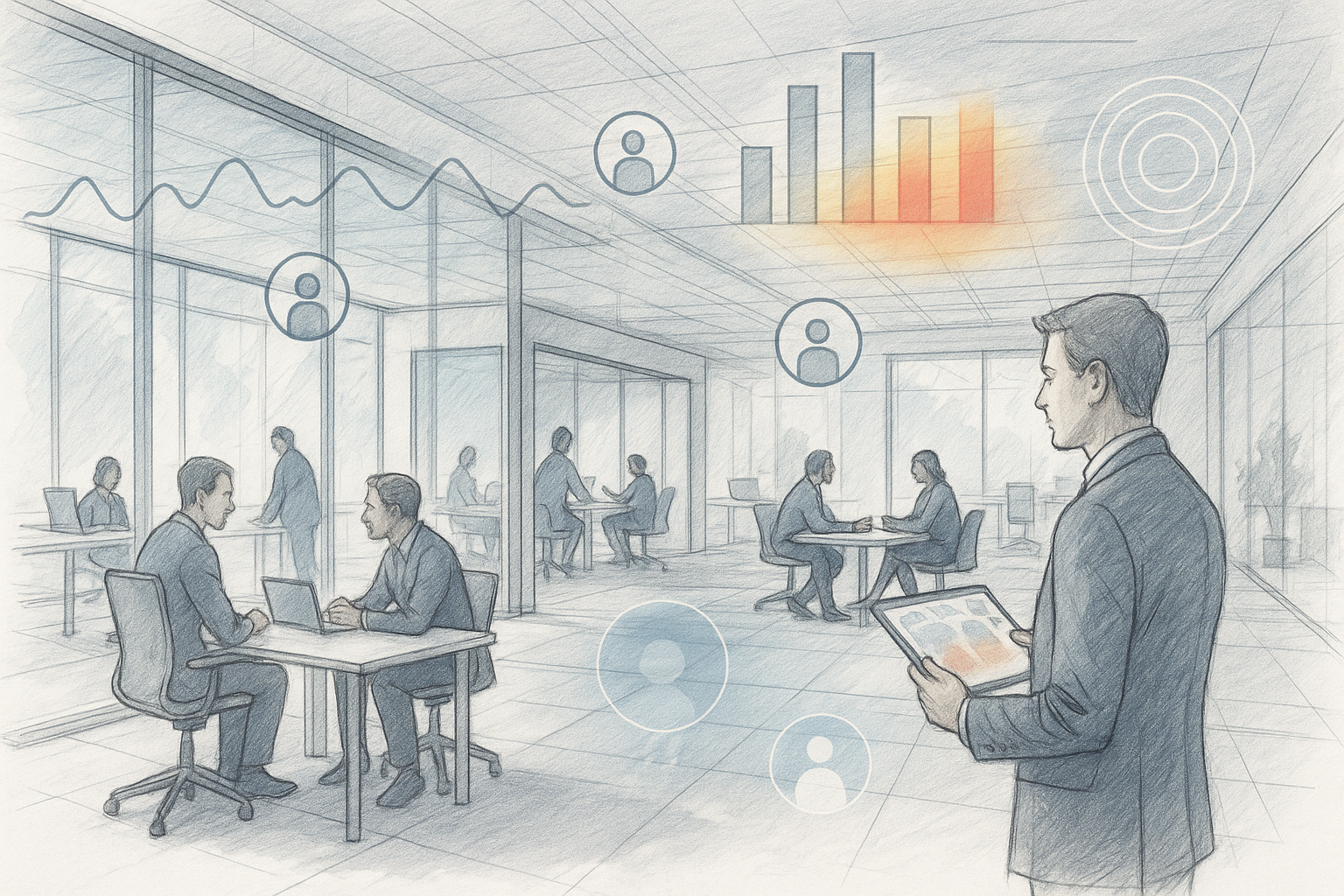“Indianapolis has always had a strong local buyer group,” notes Cameron Benz, First Vice President with CBRE‘s Indianapolis-based Multifamily team, “but with older vi...
New Occupancy Intelligence Data Drives Better Decision Making for Office Leasing




In today’s evolving commercial real estate landscape, data-driven decision making has transitioned from competitive advantage to absolute necessity. As organizations navigate the complexities of hybrid work models, cost optimization, and sustainability requirements, occupancy intelligence has emerged as a critical tool for forward-thinking CRE leaders.
“Traditional methods of planning and allocating space based on headcount alone are no longer enough,” explains Kelby Green, Co-founder and CTO of VergeSense, capturing the fundamental shift reshaping workplace strategy development.
The industry is embracing this data revolution with remarkable enthusiasm. Deloitte’s 2025 Commercial Real Estate Outlook reveals that 88% of global respondents anticipate revenue increases in the upcoming year, with 81% directing their investment specifically toward data and technology infrastructure. This surge reflects growing recognition that space utilization insights deliver tangible business value beyond simple cost reduction.
Green, whose company specializes in occupancy intelligence solutions, has witnessed this transformation firsthand. “As the modern workforce evolves, so do the demands placed on corporate real estate,” he notes. This evolution necessitates understanding how spaces actually function in practice, not just theoretical capacity.
Occupancy intelligence platforms integrating sensors, AI analytics, and visualization tools represent more than technological advancement. They signal a fundamental rethinking of the relationship between people and physical environments, providing real-time insights that drive strategic decision-making.
Beyond Cost Savings
While reducing real estate expenses remains a primary motivation for implementing occupancy intelligence solutions, innovative organizations are leveraging these platforms for broader strategic advantage.
On the sustainability front, commercial buildings account for approximately 40% of global energy consumption. By dynamically adjusting lighting, HVAC, and other systems to real usage patterns, occupancy sensors can slash energy consumption by up to 30%. JLL’s Hank solution cuts energy use by up to 20%, while BrainBox AI technology reduces consumption by up to 25% while decreasing carbon emissions by 40%.
Simultaneously, these systems support evolving workplace preferences. Cushman & Wakefield reports coworking inventory increased by 13% year-over-year in the U.S. through Q3 2024, while Robert Half research indicates 62% of employees prefer flexible arrangements. MIT Sloan Management Review found that rigid return-to-office mandates often lead to talent loss particularly among high performers.
“Continuous, future-proof data helps you reduce energy costs, optimize layouts, and drive sustainable workplace decisions,” Green explains, highlighting the dual environmental and operational benefits.
Implementation Realities
Despite the promise, organizations must address three main hurdles when implementing occupancy intelligence systems: governance, change management, and privacy concerns.
First, data governance remains surprisingly underdeveloped in the industry. Deloitte’s research reveals only 14% of commercial real estate companies believe they have well-structured data governance and privacy policies, a critical foundation for any data-driven initiative.
Second, the organizational change required often exceeds expectations. JLL notes that successfully implementing AI-powered systems typically requires reorganizing workflows and processes, not just installing technology. “This organizational change management aspect is frequently underestimated,” Green observes. “Companies need to consider how the data will influence decision-making processes throughout the organization.”
Third, privacy concerns require careful navigation. Employees may resist what they perceive as surveillance, making transparent communication about data collection and intended uses essential for successful adoption.
For organizations navigating these challenges, experts recommend starting with a pilot area to demonstrate value before scaling, while establishing clear objectives beyond simple cost reduction from the outset.
The Competitive Edge
As these platforms mature, they’re evolving from simple counting tools to sophisticated workplace experience engines incorporating environmental monitoring, predictive analytics, and integration with other workplace systems. Advanced solutions now leverage machine learning to identify patterns and make recommendations about space consolidation and reconfiguration based on actual collaboration behaviors.
“The shift toward data-driven workplace design isn’t just about efficiency, it’s about creating environments where people can do their best work,” Green concludes.
For corporate real estate leaders navigating today’s complex landscape, the message is clear: adopt occupancy intelligence or risk being left behind. Within five years, the ability to make data-driven space decisions will likely separate industry leaders from laggards, with implications far beyond real estate costs.
Those who master these capabilities now will create workplaces that attract and retain top talent. More importantly, they’ll transform real estate into a strategic differentiator in a hyper-competitive market. As Green predicts, “The companies that thrive in the next decade will be those that reimagine their spaces as dynamic, responsive environments continuously adapting to how people actually work rather than how we think they should work.”
Similar Articles
Explore similar articles from Our Team of Experts.


His website says simply “Meet Dave. Not your typical landlord.” And speaking to him, he delivers on that promise. Meeting Dave Denis, you might not guess he’s built a real ...


With over 50% of outstanding mortgages below 3.5%, the traditional resale market has stalled. In this challenging environment, Jome CEO Dan Hnatkovskyy has identified and capitalized on a cr...


In a home improvement industry dominated by aggressive lead generation and unclear pricing models, BidList has developed a platform that brings clarity and efficiency to roofing and solar in...


Bedrock Energy's Joselyn Lai on Making Geothermal Heat Financially Viable for Commercial Real Estate
“Sustainability is not a scalable approach if it’s just about thoughts and feelings and the idea of being green,” says Joselyn Lai, Co-Founder and CEO of Bedrock Energy. &#...




